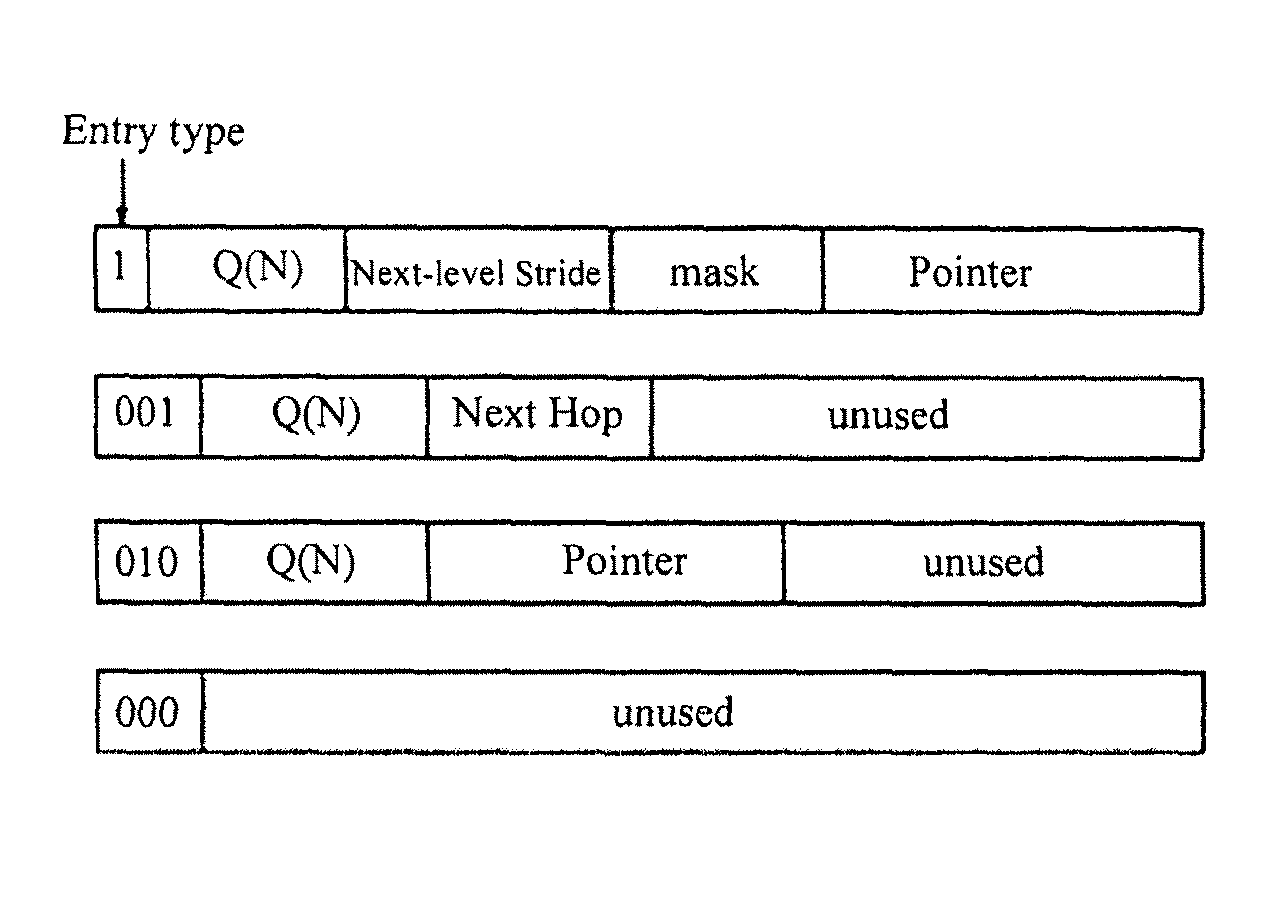Recursively partitioned static IP router tables
a static router and table technology, applied in the field of static router tables, can solve the problems of increasing the worst-case number of memory accesses required, increasing the total memory required to store the structure, and not being able to look up until, so as to achieve less memory accesses for lookup and less memory
- Summary
- Abstract
- Description
- Claims
- Application Information
AI Technical Summary
Benefits of technology
Problems solved by technology
Method used
Image
Examples
example 1
36-Bit Design
[0048]In one embodiment example, 36 bits are allocated to each hash entry. For IPv4, 8 bits for Q(N), 2 bits for the stride of the next-level partition, 8 bits for the mask, and 17 bits for the pointer are used. Although eight bits are allocated to Q(N), the strides are limited to be from five to eight. Hence, two bits are sufficient to represent the next-level stride. The use of a 17-bit pointer enables one to index up to 9 Mbits (217 ×72) of SRAM. For IPv6, the corresponding bit allocations are 7, 2, 7, and 19, respectively. For IPv6, the strides were limited to be from four to seven. Hence seven bits suffice for Q(N) and two bits suffice for the next-level stride. The 19-bit pointers are able to index a 36M bit SRAM. For the next-hop field, 12 bits were allocated for both IPv4 and IPv6. For the base structure, the enhanced base was used with end-node optimization (EBO) version of HSSTs as these were shown to be the most efficient router-table structure for static rou...
example 2
72-Bit Design
[0049]In another embodiment example, 72 bits were allocated for each hash-table entry. For both IPv4 and IPv6, 17 bits were used for Q(N), five bits for the stride of the next-level partition, 17 bits for the mask, and 19 bits for the pointer. The strides were limited to be between 1 and 17. Also, the next hop for the stripped prefix * (if any) in L(R) is stored in each hash-table entry. Partitioning was enabled so that at each node N, a selection was made between using an L(R) partition represented as an EBO and a (perfect) hash table for the remaining partitions and performing a prefix expansion of the stripped prefixes in L(R)−{*}, distributing these expanded prefixes into the remaining partitions, and then constructing a hash table for the modified partition set. Type 1 nodes use a designated bit to distinguish between the different hash-table types they may point to.
Experimental Results
[0050]To assess the efficacy of the recursive partitioning scheme, C++ codes for...
PUM
 Login to View More
Login to View More Abstract
Description
Claims
Application Information
 Login to View More
Login to View More - R&D
- Intellectual Property
- Life Sciences
- Materials
- Tech Scout
- Unparalleled Data Quality
- Higher Quality Content
- 60% Fewer Hallucinations
Browse by: Latest US Patents, China's latest patents, Technical Efficacy Thesaurus, Application Domain, Technology Topic, Popular Technical Reports.
© 2025 PatSnap. All rights reserved.Legal|Privacy policy|Modern Slavery Act Transparency Statement|Sitemap|About US| Contact US: help@patsnap.com



